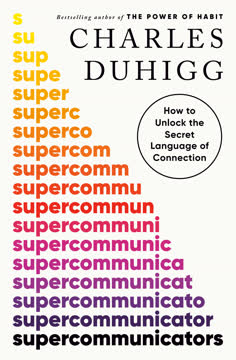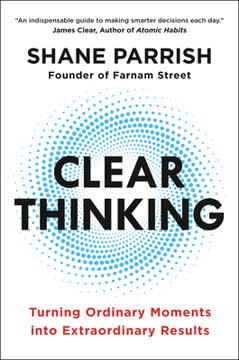ข้อสำคัญ
1. ประเมินสถานการณ์ก่อนการตัดสินใจ
หากไม่มีการประเมินปัญหาอย่างเหมาะสม จะไม่สามารถตัดสินใจได้ดีอย่างสม่ำเสมอ
หลีกเลี่ยงการตอบสนองอย่างเร่งรีบ ในสถานการณ์ที่มีความกดดันสูง มักจะมีแรงดึงดูดให้ลงมือทำทันทีโดยไม่เข้าใจสถานการณ์อย่างถ่องแท้ อย่างไรก็ตาม การกระทำเช่นนี้มักนำไปสู่ผลลัพธ์ที่ไม่ดี แทนที่จะรีบตัดสินใจ ควรใช้เวลาสักครู่เพื่อรวบรวมข้อมูลและวิเคราะห์สถานการณ์ก่อนที่จะตัดสินใจเลือกแนวทางการกระทำ
ใช้การประเมินอย่างเป็นระบบ สร้างนิสัยในการประเมินปัญหาอย่างรวดเร็วแต่ละเอียดก่อนที่จะตอบสนอง ซึ่งอาจรวมถึง:
- การระบุปัจจัยสำคัญและผู้มีส่วนได้ส่วนเสีย
- การพิจารณาผลกระทบที่อาจเกิดขึ้นจากการกระทำที่แตกต่างกัน
- การมองหาสาเหตุที่แท้จริงแทนที่จะมองแค่อาการ
- การตรวจสอบสมมติฐานและอคติ
การพัฒนาทักษะนี้ผ่านการฝึกฝนจะช่วยให้คุณตัดสินใจได้ดียิ่งขึ้นแม้ในเวลาที่จำกัด วินาทีหรือไม่กี่นาทีที่ใช้ในการประเมินสามารถปรับปรุงโอกาสในการประสบความสำเร็จได้อย่างมาก
2. เข้าใจกฎพลังเพื่อการตัดสินใจที่ดียิ่งขึ้น
กฎพลังควบคุมโลกที่อยู่รอบตัวเรา
รับรู้ความสัมพันธ์ที่ไม่เป็นเชิงเส้น หลายด้านของชีวิตปฏิบัติตามกฎพลัง ซึ่งการเปลี่ยนแปลงเล็กน้อยในข้อมูลนำไปสู่การเปลี่ยนแปลงที่ไม่สมส่วนในผลลัพธ์ การเข้าใจหลักการนี้จะช่วยให้คุณระบุโอกาสที่มีอิทธิพลสูงและหลีกเลี่ยงกับดักทั่วไป
ประเภทของกฎพลังที่ควรทราบ:
- การเติบโตแบบเอ็กซ์โพเนนเชียล (เช่น ดอกเบี้ยทบต้น การแพร่กระจายแบบไวรัล)
- ผลตอบแทนที่ลดลง (เช่น เวลาศึกษาเพิ่มเติม ฟีเจอร์ของผลิตภัณฑ์)
- การกระจายแบบหางยาว (เช่น การกระจายความมั่งคั่ง ความถี่ของคำ)
โดยการมองหาลักษณะเหล่านี้ คุณสามารถ:
- มุ่งเน้นความพยายามไปที่พื้นที่ที่มีผลกระทบสูงสุด
- หลีกเลี่ยงการลงทุนมากเกินไปในพื้นที่ที่มีผลตอบแทนลดลง
- ระบุจุดเปลี่ยนที่การเปลี่ยนแปลงเล็กน้อยสามารถนำไปสู่การเปลี่ยนแปลงที่สำคัญ
การพัฒนาสัญชาตญาณเกี่ยวกับกฎพลังจะช่วยให้คุณตัดสินใจได้อย่างมีประสิทธิภาพในหลายด้าน ตั้งแต่กลยุทธ์ธุรกิจไปจนถึงการผลิตส่วนบุคคล
3. เรียนรู้จากประสบการณ์และสร้างโมเดลทางความคิด
ความรู้มีประโยชน์เพียงเท่าที่สามารถนำมาใช้เมื่อจำเป็น
ให้ความสำคัญกับความรู้ที่นำไปปฏิบัติได้ มุ่งเน้นการเรียนรู้แนวคิดและหลักการที่สามารถนำไปใช้ในสถานการณ์จริง แทนที่จะจดจำข้อเท็จจริงที่แยกออกจากกัน สร้างเครือข่ายของโมเดลทางความคิดที่เชื่อมโยงกันซึ่งช่วยให้คุณเข้าใจและนำทางในระบบที่ซับซ้อนได้
กลยุทธ์การเรียนรู้ที่มีประสิทธิภาพ:
- ค้นหาประสบการณ์และมุมมองที่หลากหลาย
- สะท้อนถึงความสำเร็จและความล้มเหลวเพื่อสกัดบทเรียน
- ฝึกฝนการนำความรู้ไปใช้ในบริบทที่หลากหลาย
- สอนผู้อื่นเพื่อเสริมสร้างความเข้าใจของคุณ
โดยการปรับปรุงและขยายโมเดลทางความคิดอย่างต่อเนื่อง คุณจะมีความพร้อมมากขึ้นในการจัดการกับสถานการณ์ใหม่ ๆ และตัดสินใจได้อย่างถูกต้องภายใต้ความกดดัน วิธีการนี้จะเปลี่ยนทุกประสบการณ์ให้เป็นโอกาสในการเติบโตและพัฒนา
4. ใช้การคาดการณ์อย่างรวดเร็วเพื่อจัดการกับความไม่แน่นอน
การคาดการณ์อย่างรวดเร็วอิงจากการสรุปสัญชาตญาณของเราเพื่อประมาณค่าที่คาดหวังจากการตัดสินใจ
ยอมรับความไม่แน่นอน ในสถานการณ์ที่ซับซ้อน มักจะเป็นไปไม่ได้ที่จะมีข้อมูลครบถ้วน แทนที่จะรู้สึกเป็นอัมพาตจากสิ่งนี้ ให้ใช้การคาดการณ์อย่างรวดเร็วเพื่อทำการประมาณการที่สมเหตุสมผลและลงมือทำอย่างเด็ดขาด
ขั้นตอนสำหรับการคาดการณ์อย่างรวดเร็วที่มีประสิทธิภาพ:
- ระบุปัจจัยสำคัญและความสัมพันธ์ของพวกเขา
- ทำการประมาณการคร่าว ๆ ตามประสบการณ์และความรู้ในอดีต
- พิจารณาสถานการณ์ที่ดีที่สุด แย่ที่สุด และมีแนวโน้มมากที่สุด
- ปรับปรุงและปรับเปลี่ยนอย่างรวดเร็วเมื่อมีข้อมูลใหม่
วิธีการนี้ช่วยให้คุณใช้สติปัญญาและสัญชาตญาณที่สะสมมาในขณะที่ยังคงยืดหยุ่น โดยการทำการคาดการณ์ที่มีการศึกษาและปรับเปลี่ยนเส้นทางตามความจำเป็น คุณสามารถจัดการกับสภาพแวดล้อมที่ไม่แน่นอนได้อย่างมีประสิทธิภาพมากกว่าผู้ที่มองหาข้อมูลที่สมบูรณ์แบบก่อนที่จะลงมือทำ
5. ใช้ความคิดสร้างสรรค์เพื่อสร้างข้อได้เปรียบที่ทวีคูณ
ความคิดสร้างสรรค์เป็นหนึ่งในทรัพยากรไม่กี่อย่างที่สามารถให้ข้อได้เปรียบที่ทวีคูณแก่ผู้ที่สามารถใช้มันได้
พัฒนาความคิดเชิงนวัตกรรม ในสภาพแวดล้อมที่มีการแข่งขัน โซลูชันที่สร้างสรรค์สามารถให้ผลประโยชน์ที่มากเกินไป สร้างนิสัยและกระบวนการที่สนับสนุนแนวทางใหม่ ๆ ในการแก้ปัญหา
กลยุทธ์ในการเพิ่มความคิดสร้างสรรค์:
- เปิดรับแนวคิดและประสบการณ์ที่หลากหลาย
- ฝึกฝนการมองปัญหาจากมุมมองที่แตกต่าง
- รวมแนวคิดจากสาขาที่ไม่เกี่ยวข้อง
- จัดสรรเวลาให้กับการคิดอย่างไม่มีโครงสร้างและการระดมความคิด
- ยอมรับข้อจำกัดเป็นตัวกระตุ้นนวัตกรรม
โดยการเข้าหาความคิดสร้างสรรค์อย่างเป็นระบบ คุณสามารถสร้างแนวคิดที่ก้าวล้ำซึ่งให้คุณได้เปรียบอย่างมีนัยสำคัญ นี่เป็นสิ่งที่มีค่าโดยเฉพาะในสภาพแวดล้อมที่เปลี่ยนแปลงอย่างรวดเร็วซึ่งแนวทางแบบดั้งเดิมอาจกลายเป็นล้าสมัยอย่างรวดเร็ว
6. พัฒนาความแข็งแกร่งทางจิตใจเพื่อทำงานภายใต้ความกดดัน
คุณไม่ได้ขึ้นไปถึงระดับความคาดหวัง แต่จะตกลงไปที่ระดับการเตรียมตัวของคุณ
ฝึกฝนเพื่อความยืดหยุ่น สถานการณ์ที่มีความกดดันสูงสามารถทำให้การตัดสินใจและประสิทธิภาพลดลง โดยการพัฒนาความแข็งแกร่งทางจิตใจ คุณสามารถรักษาความชัดเจนและประสิทธิภาพแม้ในสถานการณ์ที่ท้าทาย
ด้านสำคัญของความแข็งแกร่งทางจิตใจ:
- การควบคุมอารมณ์
- สมาธิและการมุ่งเน้น
- การพูดคุยกับตนเองในเชิงบวก
- การมองเห็นและการซ้อมจิต
- เทคนิคการหายใจเพื่อจัดการกับความเครียด
การฝึกฝนทักษะเหล่านี้อย่างสม่ำเสมอสามารถปรับปรุงความสามารถในการจัดการกับความเครียดและตัดสินใจได้ดีภายใต้ความกดดันได้อย่างมาก เช่นเดียวกับที่คุณอาจฝึกฝนทางกายภาพสำหรับสถานการณ์ที่ต้องการ ความเตรียมตัวทางจิตใจเป็นสิ่งสำคัญสำหรับการแสดงผลงานที่ดีที่สุดในสภาพแวดล้อมที่มีความเสี่ยงสูง
7. ให้ความสำคัญและตัดสินใจในช่วงเวลาที่สำคัญ
ไม่มีการตัดสินใจใด ๆ เป็นการตัดสินใจ และมักจะเป็นการตัดสินใจที่เลวร้ายที่สุด
ลงมือทำด้วยจุดมุ่งหมาย ในสถานการณ์ที่สำคัญ ความลังเลอาจเป็นอันตรายมากกว่าการเลือกที่ไม่สมบูรณ์ พัฒนาความสามารถในการจัดลำดับความสำคัญและตัดสินใจอย่างรวดเร็ว แม้จะมีข้อมูลไม่ครบถ้วน
กรอบการทำงานสำหรับการกระทำที่เด็ดขาด:
- ประเมินสถานการณ์อย่างรวดเร็ว (ดูที่ข้อสรุปสำคัญ 1)
- ระบุปัจจัยที่สำคัญที่สุด
- สร้างชุดตัวเลือกที่จำกัด
- เลือกตัวเลือกที่ดีที่สุดตามข้อมูลปัจจุบัน
- มุ่งมั่นกับการตัดสินใจและลงมือทำ
- เตรียมพร้อมที่จะปรับเปลี่ยนเมื่อสถานการณ์เปลี่ยนแปลง
โดยการพัฒนาความเด็ดขาด คุณสามารถคว้าโอกาสและตอบสนองต่อความท้าทายได้อย่างมีประสิทธิภาพ จำไว้ว่าหลายกรณี ค่าใช้จ่ายจากการล่าช้าหรือการไม่ลงมือทำมักจะมากกว่าผลประโยชน์จากการรอข้อมูลที่สมบูรณ์แบบ ผู้นำที่เด็ดขาดสร้างความมั่นใจและสามารถระดมทรัพยากรได้อย่างมีประสิทธิภาพมากกว่าผู้ที่ลังเล
อัปเดตล่าสุด:
FAQ
What's The Art of Clear Thinking about?
- Decision-Making Focus: The book explores decision-making processes, particularly in high-stakes environments like military operations, using the author's experiences as a stealth fighter pilot.
- ACE Helix Framework: Introduces the ACE Helix framework—Assess, Choose, Execute—to systematically approach decision-making in complex situations.
- Human vs. Computer: Discusses the advantages of human decision-making over computer algorithms, emphasizing adaptability and creativity.
- Real-World Applications: While rooted in aviation, the principles are applicable to various fields, including business and healthcare.
Why should I read The Art of Clear Thinking?
- Practical Insights: Offers practical tools and techniques for improving decision-making abilities, applicable across different contexts.
- Engaging Stories: Uses compelling stories from the author's flying career to illustrate key concepts, making the material relatable.
- Enhance Critical Thinking: Encourages questioning assumptions and thinking creatively, valuable in today's fast-paced environment.
- Unique Perspective: Provides a unique perspective on high-pressure decision-making from a fighter pilot's viewpoint.
What are the key takeaways of The Art of Clear Thinking?
- Importance of Clarity: Clear thinking is essential for effective decision-making, especially in complex situations.
- OODA Loop: Discusses the OODA (Observe, Orient, Decide, Act) loop for rapid adaptation in dynamic environments.
- Learning from Mistakes: Highlights the value of debriefing and learning from past experiences to refine decision-making skills.
- Creativity in Solutions: Emphasizes the need for creativity in problem-solving, advocating for a flexible approach.
What is the ACE Helix in The Art of Clear Thinking and how does it work?
- Three Phases: Consists of Assess, Choose, and Execute, each building on the previous to create a dynamic decision-making framework.
- Assess Phase: Involves gathering information and analyzing the situation to understand the problem fully.
- Choose and Execute: After assessment, individuals choose the best course of action and execute it effectively, with continuous evaluation.
- Dynamic Framework: Encourages ongoing adjustment as new information becomes available.
What is the fast-forecasting method mentioned in The Art of Clear Thinking?
- Quick Estimation: Involves rapidly estimating the expected value of a decision based on available information.
- Accountability: Holds individuals accountable for their understanding of the situation, preventing groupthink.
- Improves Decision Quality: Enhances decision quality by integrating critical thinking and personal judgment.
- Streamlined Process: Allows for quicker decision-making without excessive analysis.
How does The Art of Clear Thinking define creativity in decision-making?
- Connecting Ideas: Creativity is the ability to connect seemingly unrelated ideas to form innovative solutions.
- Framework for Creativity: Provides a framework for fostering creativity by breaking down problems into essential effects.
- Real-World Applications: Illustrates how creativity can lead to exponential advantages in various fields.
- Crucial Skill: Argues that creativity is crucial for effective problem-solving.
What are the best quotes from The Art of Clear Thinking and what do they mean?
- “There’s no problem so bad you can’t make it worse.”: Highlights the importance of careful decision-making to avoid exacerbating problems.
- “You don’t rise to the level of your expectations, you fall to the level of your preparation.”: Emphasizes the importance of thorough preparation for success.
- “What is important is seldom urgent and what is urgent is seldom important.”: Encourages prioritization in decision-making, focusing on long-term goals.
- “A good pilot uses superior judgment to avoid situations that require the use of superior skill.”: Reflects the value of proactive decision-making over reactive problem-solving.
How does the author use storytelling in The Art of Clear Thinking?
- Personal Experiences: Shares anecdotes from his time as a fighter pilot to illustrate key concepts.
- Engagement: Storytelling engages readers and maintains interest, transforming complex ideas into memorable narratives.
- Lessons Learned: Each story ties to specific lessons about decision-making, reinforcing the book's teachings.
- Relatable Context: Provides context and makes the material more relatable to readers.
What role does technology play in decision-making according to The Art of Clear Thinking?
- Augmentation of Training: Technology enhances training and decision-making processes through simulators and virtual reality tools.
- Data Analysis: Enables the collection and analysis of vast amounts of data to inform decision-making.
- Continuous Improvement: Emphasizes the need to continually assess and adapt technology for improved decision-making capabilities.
- Staying Ahead: Helps organizations stay ahead in dynamic environments.
How can the principles in The Art of Clear Thinking be applied outside of aviation?
- Business Decision-Making: Frameworks and techniques improve strategic planning and operational efficiency in business settings.
- Healthcare and Emergency Response: Professionals can make quick, informed decisions in high-pressure situations.
- Personal Life: Individuals can enhance decision-making skills in everyday life by adopting a structured approach.
- Universal Relevance: Principles are applicable across various fields and contexts.
What is the significance of debriefing in the decision-making process in The Art of Clear Thinking?
- Learning from Experience: Debriefing allows reflection on decisions and identification of areas for improvement.
- Team Collaboration: Fosters collaboration and communication among team members, encouraging open discussions.
- Continuous Improvement: Analyzing past missions helps refine strategies and build a culture of continuous improvement.
- Collective Learning: Leads to collective learning and better decision-making over time.
How does The Art of Clear Thinking address the concept of mental toughness?
- Skill Development: Argues that mental toughness is a skill that can be developed through training and practice.
- Techniques for Resilience: Outlines techniques like visualization, self-talk, and breathing exercises to build mental toughness.
- Real-Life Applications: Shares personal experiences to illustrate the importance of mental toughness in high-pressure scenarios.
- Accessible Concept: Makes the concept accessible and relatable to readers through practical examples.
รีวิว
ศิลปะแห่งการคิดอย่างชัดเจน โดย ฮาซาร์ด ลี ได้รับคำชมอย่างสูงสำหรับการผสมผสานที่น่าสนใจระหว่างประสบการณ์นักบินรบและกลยุทธ์การตัดสินใจที่ใช้ได้จริง ผู้อ่านชื่นชอบการเล่าเรื่องของลี โครงสร้าง ACE Helix และเทคนิคที่ผ่านการทดสอบในสนามรบซึ่งสามารถนำไปใช้ได้ในหลายสาขา หนังสือเล่มนี้ได้รับการยกย่องในด้านความน่าสนใจที่เป็นสากล ข้อมูลเชิงลึกเกี่ยวกับความแข็งแกร่งทางจิตใจ และความสามารถในการพัฒนาความคิดเชิงวิเคราะห์ แม้ว่าบางคนอาจรู้สึกว่ามันมีลักษณะชายชาตรีหรือเป็นชีวประวัติ แต่ผู้รีวิวส่วนใหญ่แนะนำว่าเป็นแหล่งข้อมูลที่มีคุณค่าสำหรับการพัฒนาทักษะการตัดสินใจและการเผชิญกับความไม่แน่นอนอย่างชัดเจน









